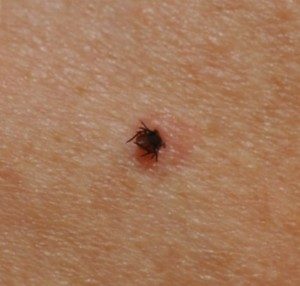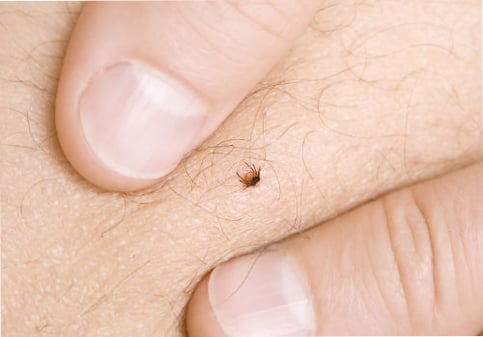Lyme Disease Understanding-- Know the Symptoms and Remain Protected
Lyme condition remains a considerable public wellness worry, particularly in regions where ticks are common. What details steps can people take to protect themselves against this often-overlooked illness, and just how can areas improve their overall reaction?
Understanding Lyme Illness
Lyme disease, a common tick-borne illness, is created by the germs Borrelia burgdorferi. This disease is largely transmitted to human beings with the bite of contaminated black-legged ticks, commonly referred to as deer ticks. The geographical circulation of Lyme condition is greatly focused in the northeastern, north-central, and Pacific coastal regions of the USA, although situations have actually been reported in various other areas as well.
The life cycle of the tick plays an important duty in the transmission characteristics of Lyme illness. Human exposure to ticks is especially raised in verdant or woody locations, specifically throughout warmer months when ticks are most energetic.
Comprehending the ecology of Lyme disease is essential for effective avoidance strategies. Awareness of tick environments and actions can substantially reduce the chance of attacks. Public education and learning on correct tick elimination strategies and the value of individual safety steps can aid reduce the danger of having this complicated and possibly debilitating illness.
Usual Signs to Identify
Recognizing the typical signs and symptoms of Lyme illness is vital for early diagnosis and therapy. The first symptom usually includes a characteristic skin rash called erythema migrans, which looks like a red circular patch with a central cleaning, resembling a "bull's- eye." This breakout commonly develops within 3 to 1 month after a tick bite and can differ in dimension.
In addition to the breakout, individuals might experience flu-like signs and symptoms, including fever, chills, fatigue, muscular tissue pains, and joint pain. These signs and symptoms can be deceptive, as they are usual to many various other illnesses. If left neglected, Lyme disease can progress to a lot more serious indications, consisting of neurological concerns such as meningitis, face palsy, or cognitive problems.
Joint swelling, specifically in the knees, is an additional significant symptom that may arise in later stages. Some individuals report enhanced exhaustion or relentless headaches. Recognition of these symptoms is vital, as very early detection can bring about reliable treatment, typically including prescription antibiotics. Timely intervention can prevent the progression of the condition and lower the danger of long-lasting problems. Caution is vital in identifying and dealing with the symptoms associated with Lyme disease.

Danger Factors and Transmission
Recognizing the danger elements and settings of transmission related to Lyme condition is crucial for efficient prevention. Lyme condition is mainly sent with the bite of infected black-legged ticks, commonly referred to as deer ticks. These ticks grow in woody, grassy, and brushy areas, making exterior tasks in such environments a considerable risk aspect for transmission.
Individuals who participate in outdoor entertainment activities such as camping, walking, or horticulture are more probable to experience these ticks. Furthermore, staying in or going to areas where Lyme condition is endemic, consisting of components of the northeastern, north-central, and Pacific seaside areas of the USA, raises exposure threat. Certain occupations, such as forestry, landscape design, and agriculture, also position heightened risks because of long term outside exposure.
Additionally, the life cycle of the tick, which requires particular ecological problems, impacts transmission dynamics. Aspects such as climate adjustment, which influences tick populaces and environments, can further worsen risk. Comprehending these factors is crucial for individuals to identify their prospective exposure and take needed safety measures to minimize their threat of you can check here having Lyme disease.
Efficient Avoidance Techniques
Frequently carrying out efficient avoidance techniques is important for reducing the danger of Lyme disease. The very first line of protection is to avoid locations known for high tick populaces, particularly wooded and grassy atmospheres.

Educating family members and find this pals regarding these prevention strategies cultivates neighborhood understanding and watchfulness, more lowering the chance of Lyme condition transmission. By embracing these steps, individuals can effectively shield themselves from the risks linked with Lyme condition.
Significance of Early Discovery
Very early detection of Lyme disease significantly affects treatment end results and can protect against the progression of the illness - Lymecare Alliance. The onset of Lyme disease are usually noted by flu-like symptoms, consisting of fever, fatigue, and the particular erythema migrans rash. Identifying these indicators without delay permits prompt treatment, which typically includes a training course of prescription antibiotics. When dealt with early, a lot of people recover fully without lasting problems.
Conversely, delayed medical diagnosis can cause extra extreme manifestations of the condition, including neurological and cardiac issues, which can be more challenging to treat and might cause prolonged health and wellness concerns. Late-stage Lyme disease may need extensive antibiotic therapy and can result in persistent signs and symptoms, significantly affecting lifestyle.
On the whole, enhancing awareness around the early signs of Lyme condition is critical for reliable administration and prevention of even more severe health and wellness consequences. Early treatment is not only beneficial for the specific however likewise critical in minimizing the general problem of Lyme disease in the neighborhood.
Conclusion
In recap, raising awareness of Lyme Condition is crucial for promoting very early detection and reliable prevention. Recognizing typical signs, such as the particular "bull's- eye" breakout and flu-like indications, can facilitate prompt medical treatment. Understanding danger factors and carrying out safety nets, including protective garments and regular tick checks, is vital for decreasing the chance of transmission. Ultimately, a cumulative effort to stay notified and vigilant versus Lyme article Disease can improve area health and minimize the effect of this possibly serious disease.
Lyme condition continues to be a significant public wellness problem, particularly in regions where ticks are common.The life cycle of the tick plays a critical duty in the transmission dynamics of Lyme disease.Understanding the danger aspects and modes of transmission connected with Lyme illness is necessary for efficient avoidance. Lyme illness is mainly transferred with the bite of infected black-legged ticks, typically understood as deer ticks. Comprehending these elements is crucial for people to acknowledge their possible direct exposure and take needed preventative measures to reduce their danger of contracting Lyme disease.